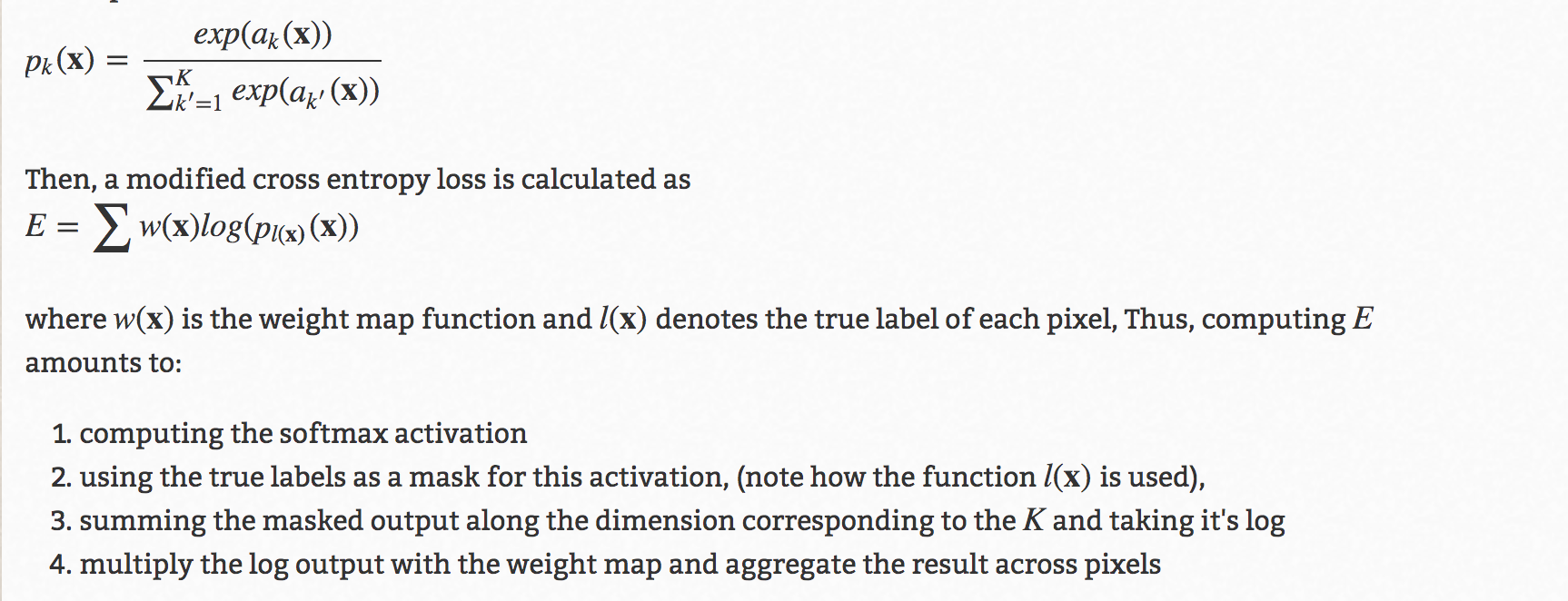There is a famous trick in u-net architecture to use custom weight maps to increase accuracy. Below are the details of it:
Now, by asking here and at multiple other place, I get to know about 2 approaches. I want to know which one is correct or is there any other right approach which is more correct?
First is to use
torch.nn.Functionalmethod in the training loop:loss = torch.nn.functional.cross_entropy(output, target, w)where w will be the calculated custom weight.Second is to use
reduction='none'in the calling of loss function outside the training loopcriterion = torch.nn.CrossEntropy(reduction='none')and then in the training loop multiplying with the custom weight:
gt # Ground truth, format torch.long pd # Network output W # per-element weighting based on the distance map from UNet loss = criterion(pd, gt) loss = W*loss # Ensure that weights are scaled appropriately loss = torch.sum(loss.flatten(start_dim=1), axis=0) # Sums the loss per image loss = torch.mean(loss) # Average across a batch
Now, I am kinda confused which one is right or is there any other way, or both are right?

